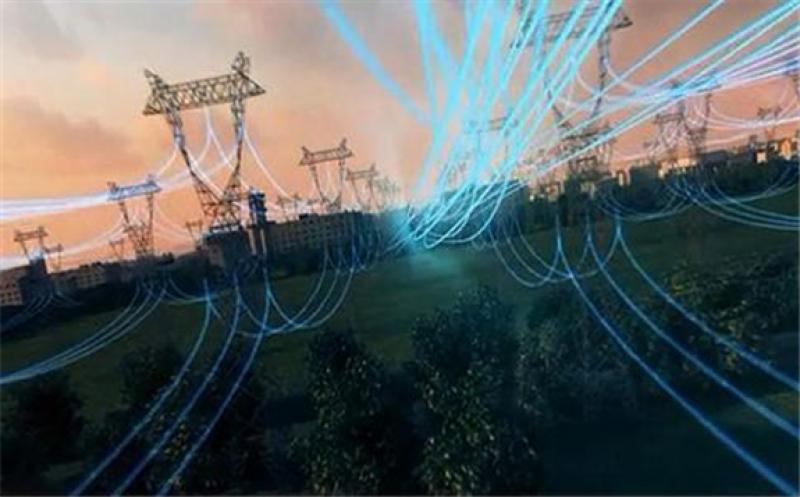All in all, the centralized power network will work according to certain rules to ensure that it will not be overloaded and stable at any time of the day. For example, hydroelectric power stations can adjust the operation of generators according to the electricity load situation of the corresponding area through uninterrupted work to ensure the uninterrupted power supply around the clock.

Why does the smart grid represent the future of energy?
However, how do you manage the decentralized grid, and because there are too many variables that cannot be controlled by humans, it is actually impossible to accurately control energy production? In fact, these are mainly discontinuous energy sources, usually locally produced. This is where the concept of smart grid comes into play. It is a smart network used to manage the system. In this system, we find that wind energy, photovoltaic energy, geothermal energy, cogeneration and other forms (such as tidal energy) will soon appear.
Why do I need a network check?
Before proceeding with purely investment-related aspects, it is best for investors to at least understand the basic principles of power production system operation.
Power grids across the country may be affected by power surges or production peaks, and may even cause physical damage to the national power grid, resulting in power outages that may take several days to resolve. The economic loss is incalculable.
In a centralized network, the system can correct itself very quickly, and problems can be avoided by simply shutting down the plant or reducing its production capacity or activating the hydroelectric power plant in a consumption mode.
In a decentralized power grid, current is generated by wind and photovoltaic power plants (including private power plants), and peak production cannot be controlled. Imagine a hot and windy month in August. For the same reason, most industries are closed due to holidays or trams. Wind and photovoltaic power generation is still going on, and no one can stop the power generation, while greatly reducing the demand for electricity. Where do we put the excess current to avoid peaks?
Therefore, a smart national grid (smart grid) including innovative and alternative solutions needs to be established. We expect that one of them is under development, called vehicle-to-grid (V2G).
What is a smart grid?
The smart grid consists of multiple networks connected to each other through a set of sensors. These sensors support the exchange of information between the various nodes of the network itself in order to manage and regulate the power distribution in the grid in the best way.
Therefore, the intelligent network can manage the complex relationships among all participants, producers, distributors and consumers in this field.
To have a true smart grid, you need to start from the basics, that is, from a new generation of meters that can properly communicate with the "smart grid language". For example, in Italy, EnelDistribuzione is working to replace the first generation of smart meters with more innovative open meters, which will effectively prepare the national grid for smart grids. These meters will enable Italian households to obtain home automation services, also known as smart homes.
Electricity must be saved in the smart grid
It is understandable that in the smart grid, clean production sources are the largest part, and they will represent all in the future.
Since the current main renewable energy sources are wind energy and photovoltaic power generation, their production characteristics require energy storage. This is where the storage system functions as a network component (utility electric energy storage system), which is unprecedented in many national power grids.
Storage systems will need to be efficient, durable and safe, which is why many studies are still in progress.
Vehicle to grid
This is where one of the storage and stabilization solutions for smart grids comes into play, and it is called vehicle-to-grid (V2G).
What is the vehicle to the grid. In the near future, certain cars on the road will be fully electric and equipped with batteries. The latter is charged by connecting the car to the grid through a pole located on the street and managed by a third-party operator (such as EnelX) or through a device installed in the home garage.
New factories in the design stage, such as the factory built by FCA Group and Terna and Engieeps, stipulate that car batteries can be used for storage and as a current transmission point to the grid.
This innovative system is one of the solutions designed to provide stability to decentralized networks when current peaks occur.
The electricity production and distribution of the smart grid is no longer just the business of large companies, but the business of everyone from private producers and energy consumers (producers) to battery manufacturers to large electric vehicle manufacturing groups.
The role of investors in the smart grid business
In this broad and diverse but not yet fully defined framework, investors have discovered new investment opportunities, which can be summarized as follows:
Warehouse production company;
Companies developing new grid infrastructure;
Industrial groups that produce electric vehicles;
Manufacturers of automatic charging columns for electric vehicles and suppliers of energy distribution services for electric vehicles and motorcycles;
In the automotive field, all major companies have invested and will continue to invest in the development of electric vehicles, as well as Nissan, Peugeot SA (UG), and most recently FCA Group, which are cooperating with Enel to conduct V2G system trials. Tesla (TSLA) appeared on a very interesting level, that is, a complete solution: a photovoltaic system on the roof of a car, a house, and a household battery.
Generally speaking, in the next few decades, green investment will get the highest return. It depends on how investors find the most promising companies.